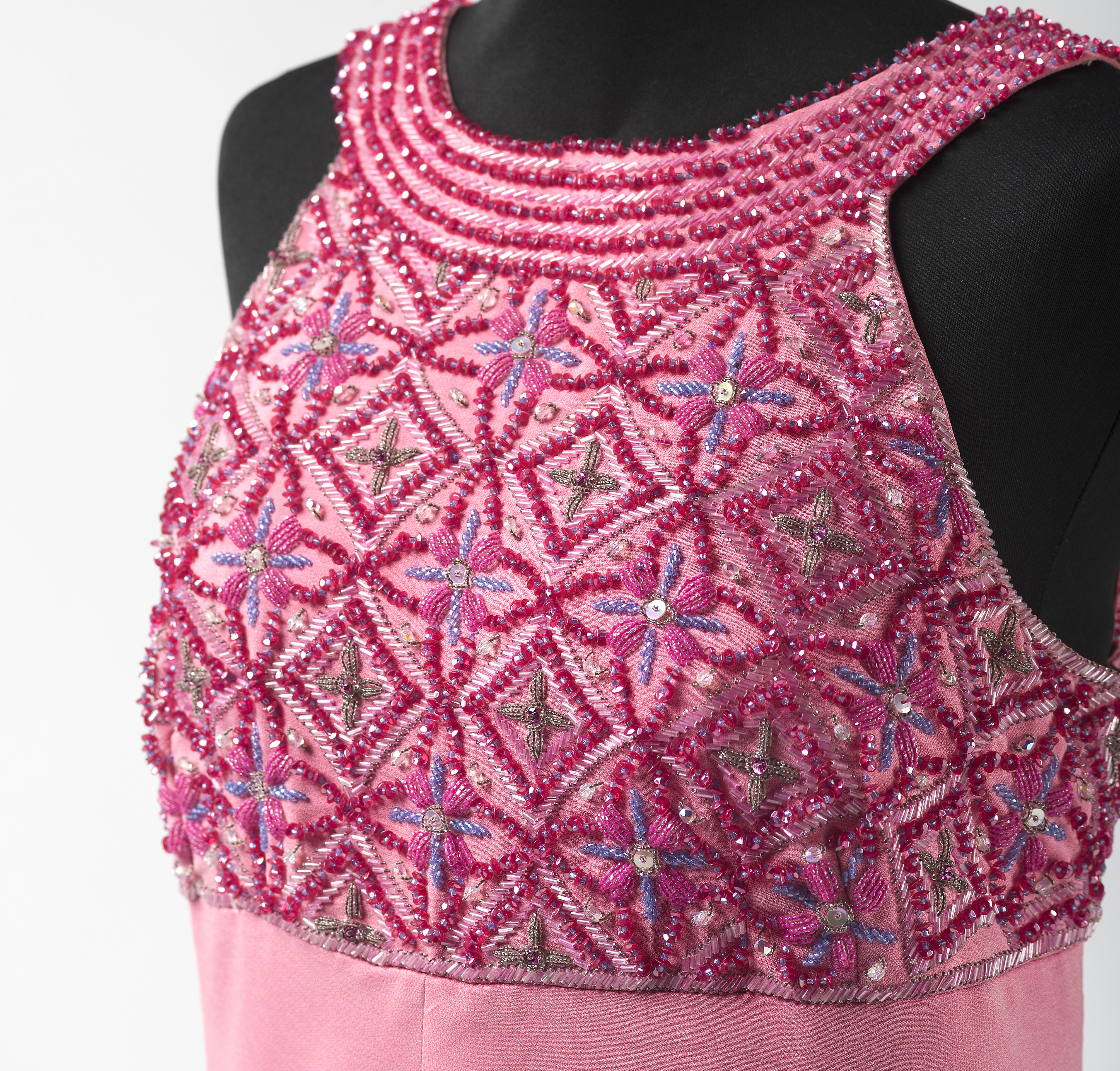
Until July 3: NOVECENTO ELEGANTE. Museo del Tessuto, via Puccetti, 3, Prato. Opening hours: Tuesday/Wednesday/Thursday: 10 am – 3 pm. Friday/Saturday: 10 am – 7 pm; Sunday: 3 pm – 7 pm. Closed Monday. Admission €6
The Fineschi family is one of the most active families in Prato. Their history spans over a century and the family are distinguished by the commercial activities they undertook, that brought the attention of the city. From the historic pasta factory founded by Antonio Egidio Fineschi in 1826, to Antonio Fineschi who started a car sales business in recent years.
Ada Tirinnanzi Fineschi gifted the city’s Museo del Tessuto (Textile Museum) 160 items of men’s and women’s fashion and accessories, back in 2021. For this special exhibition, 80 have been selected to be displayed by in-house Museo del Tessuto curator Daniele degl’Innocenti, in collaboration with Valentina Sonnati.
The exhibition is set up in the Sala dei Tessuti Antichi (Hall of Fabrics), where 30 garments and 50 accessories are displayed. The itinerary is arranged chronologically according to the time of day; starting with children’s clothing and toys, ladies and gentleman’s day and evening fashion complemented, and nightwear for ladies. The women’s fashion reflects French style and the fashion in the 1920’s that became less structured and more free-flowing. Richly embroidered dresses, nightwear and negligees are present in the collection as well. The menswear section showcases tailcoats, tuxedos and overcoats, in addition also hats, canes and pipes. The time period spans from the early 1920s to approximately the ‘70s and ‘80s, to include renowned Italian brands such as Gianfranco Ferré and Rocco Barocco from the 1980s. Styles, the quality of the fabrics and the manufacture of the clothing reflect the fashion trends of those periods—evidenced by exhibits of magazines, sketches, fashion forecasting publications such as trend books, and pre-collections.
The study of the collection, presented by the Museo, combined with photographs and video material donated by the family, allow one to reconstruct family life, while providing an insight into the history of the garments and the manufacturing processes.
The Prato district has been associated with the production of fabric and textile since the middle ages. In modern times, there were close to 7,000 companies working in this sector. The Museo del Tessuto was founded within the “Tullio Buzzi” Industrial Technical Textile Institute, back in 1975, thanks to a donation of approximately 600 textile items. The pieces were added to the already existing collection gathered by the Institute’s professors for students to study and analyze. Since then, the collection has been significantly growing. Since 2003, the museum is located in the Cibino Campolmi, an old textile factory. Past exhibitions have revolved around Leonardo da Vinci, fashion heritage, Chinese fiber art, and Turandot. (ted de veer)







